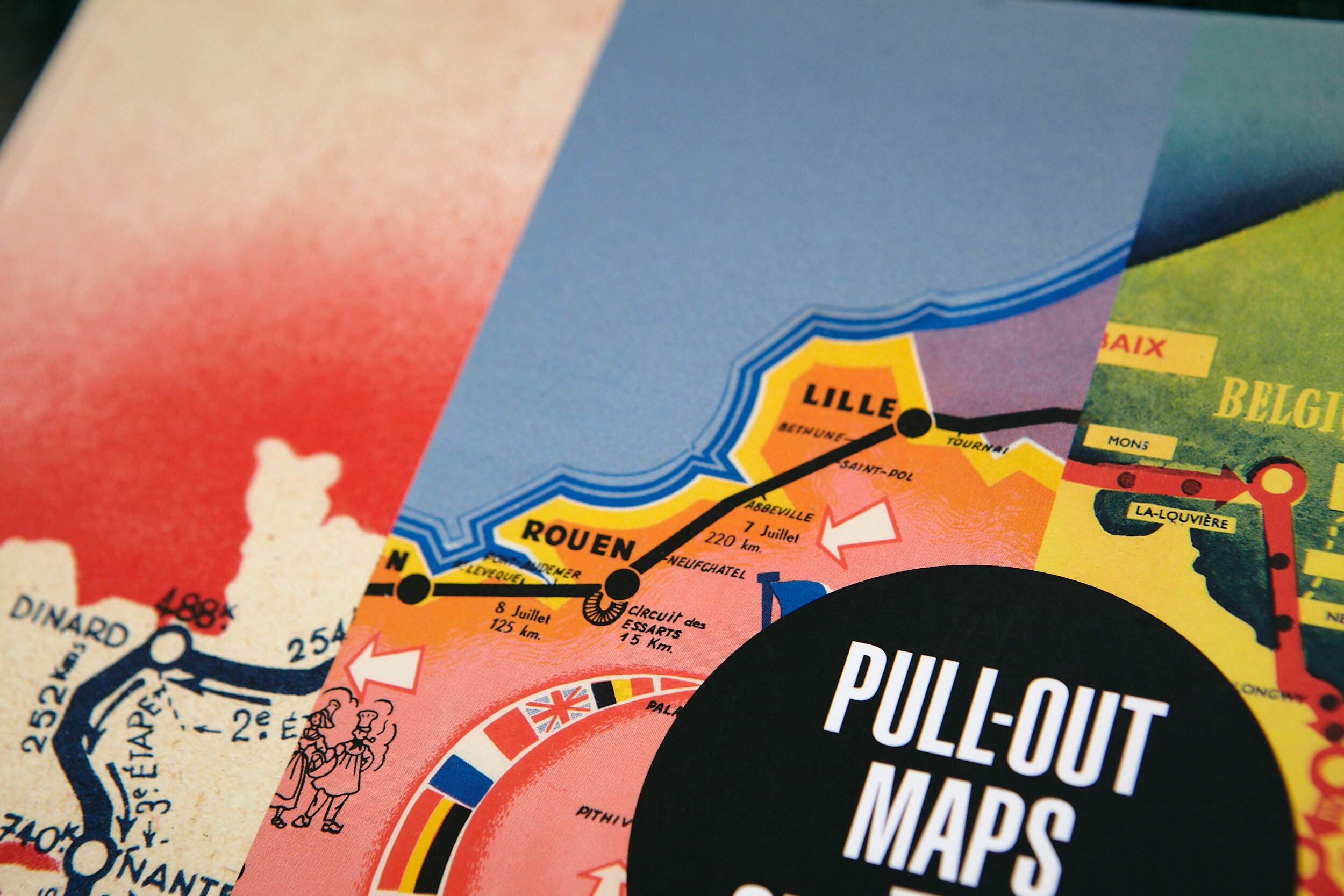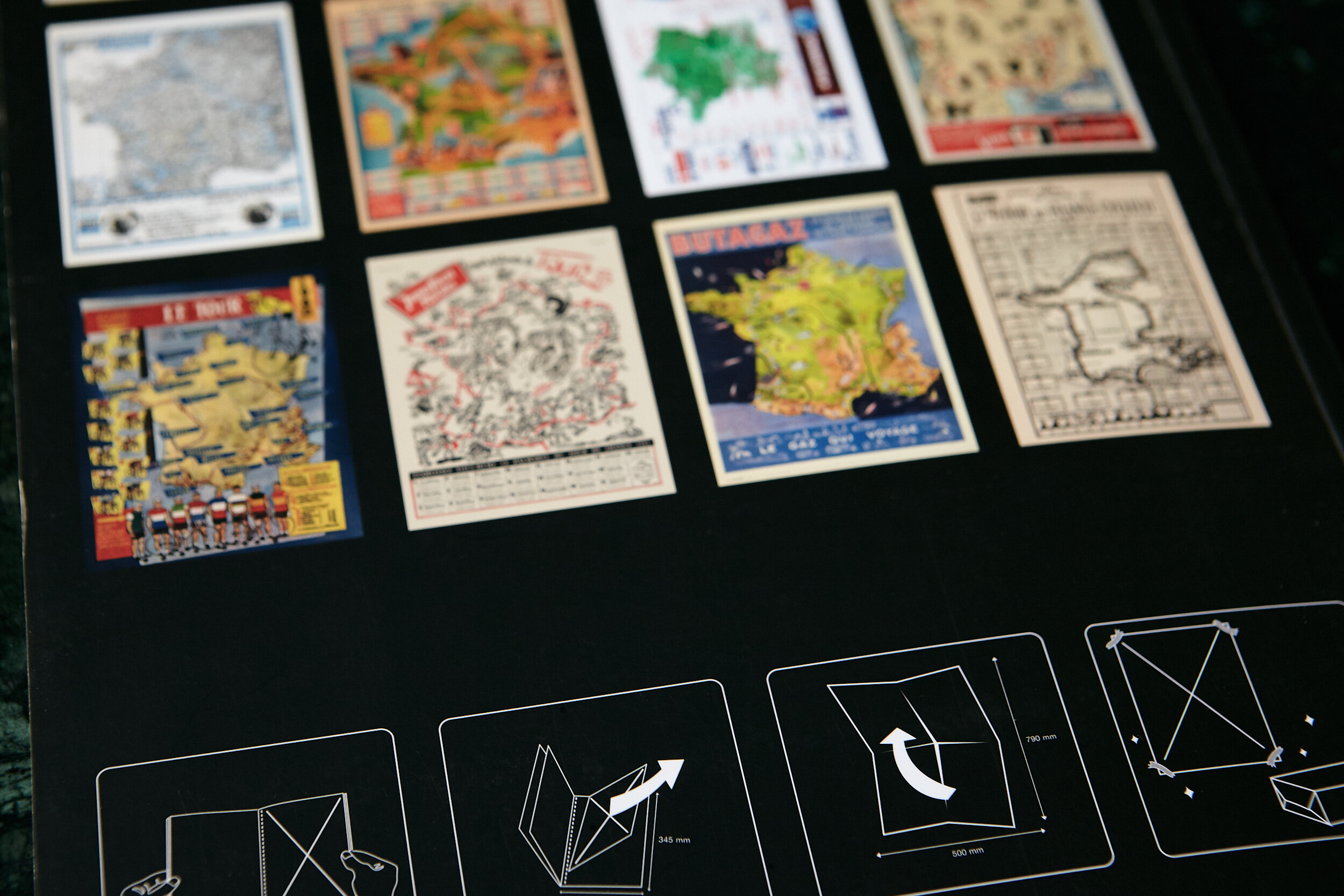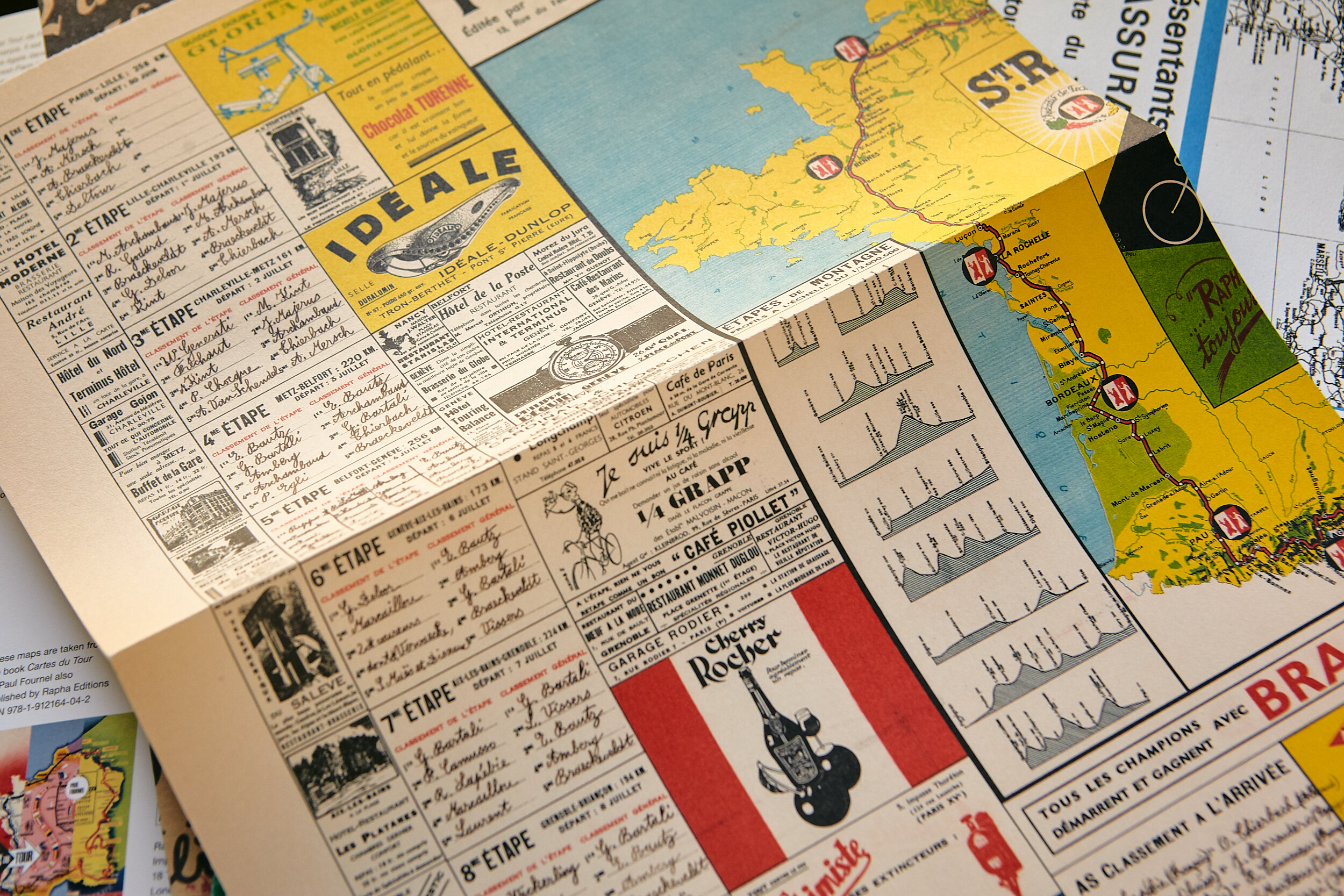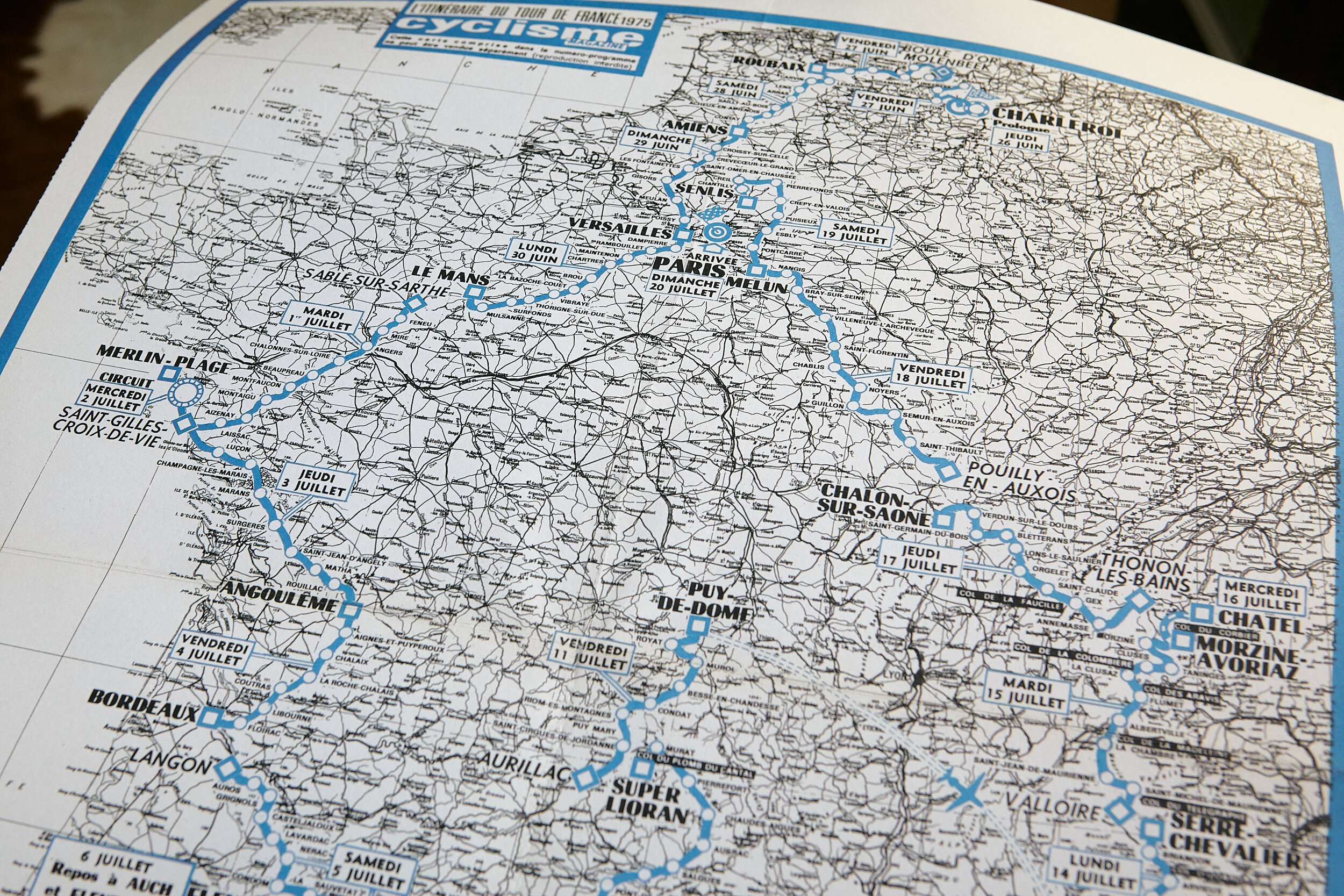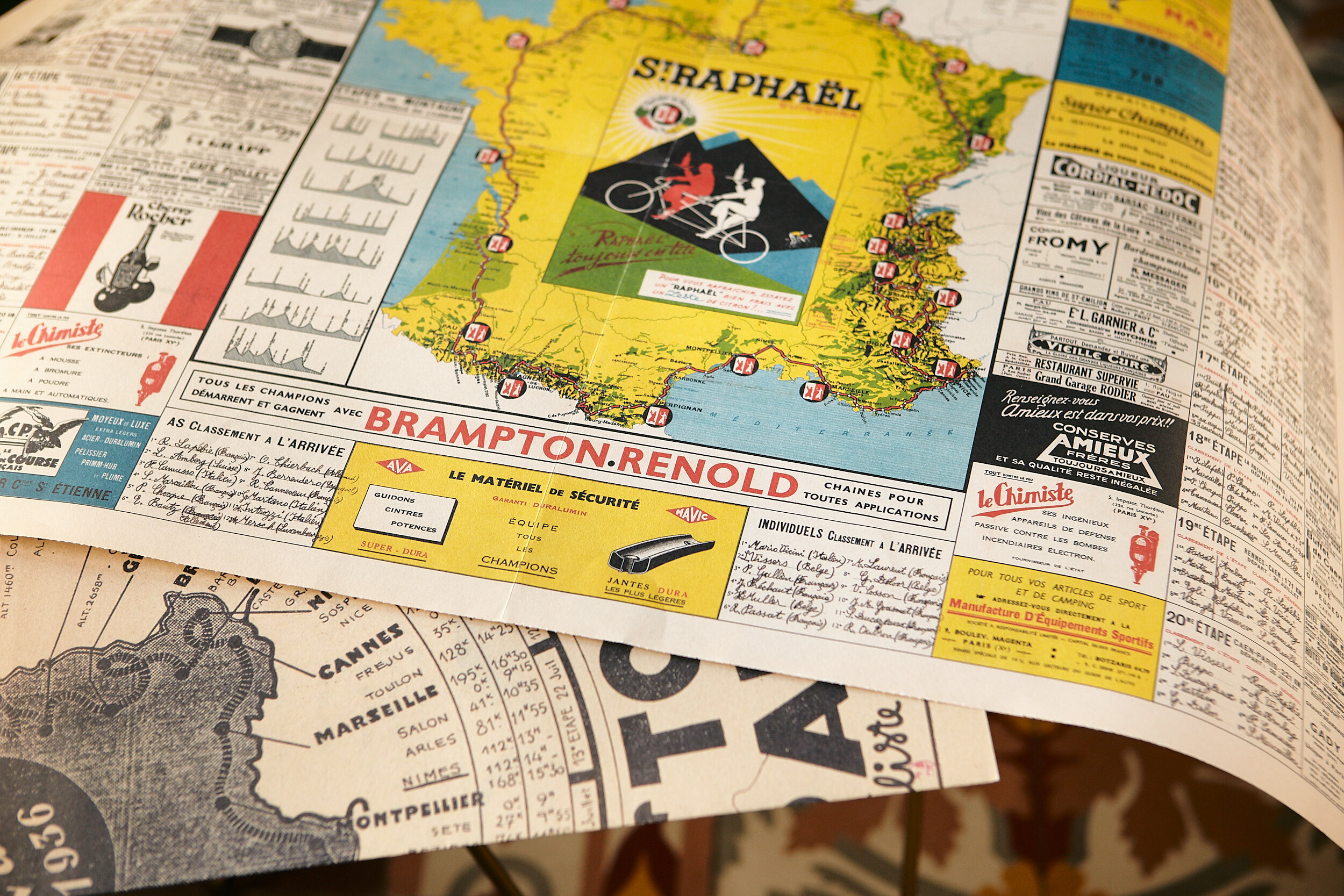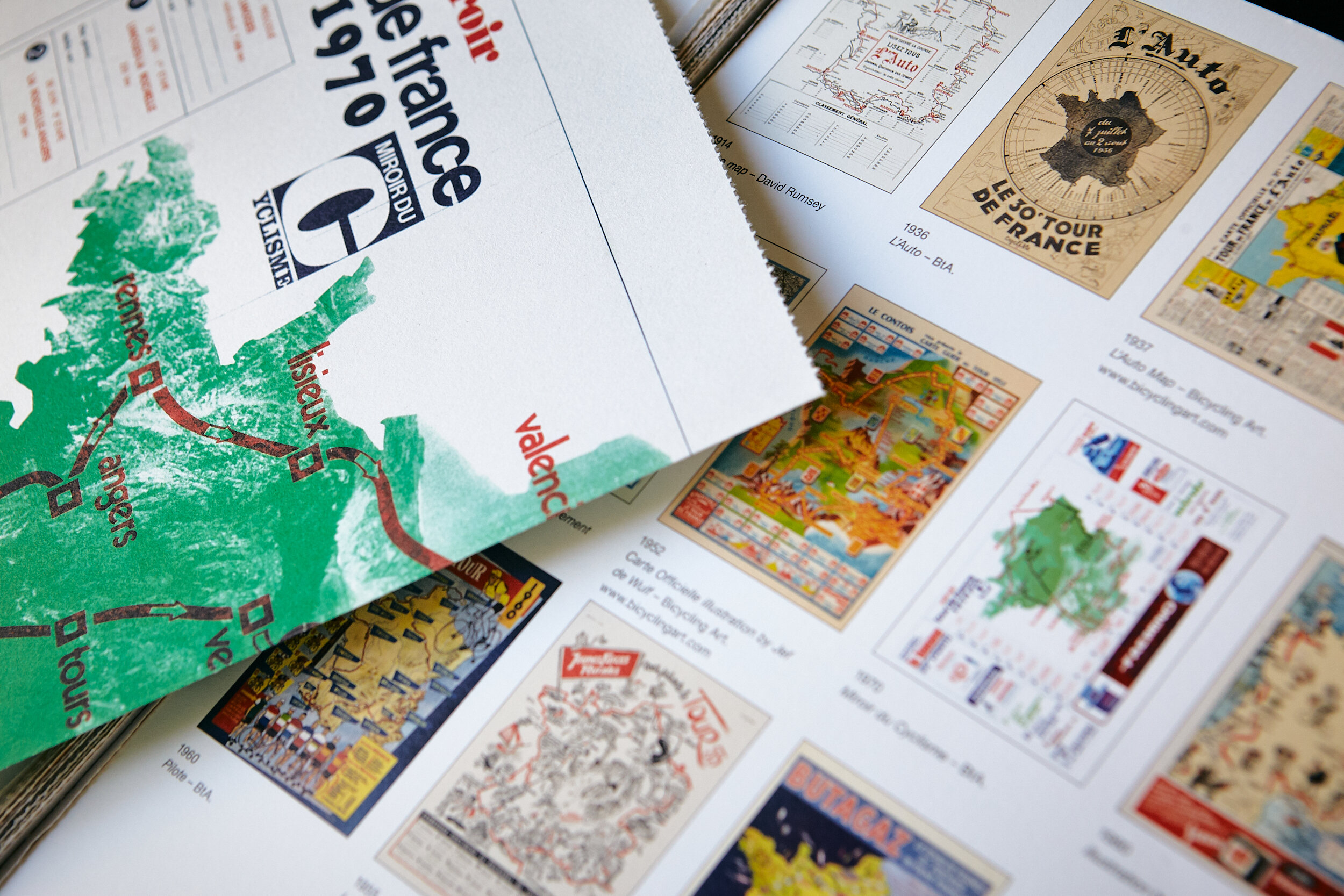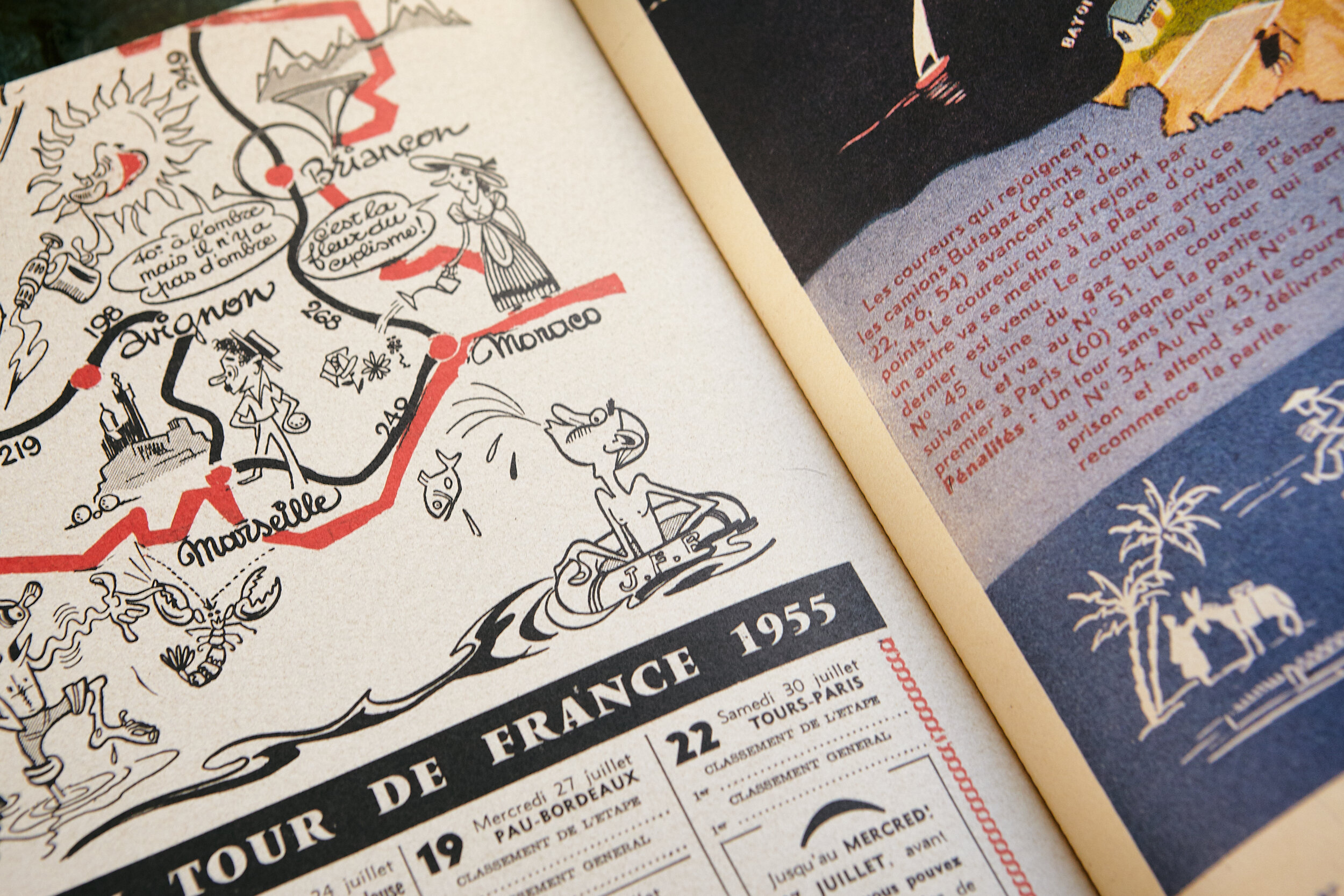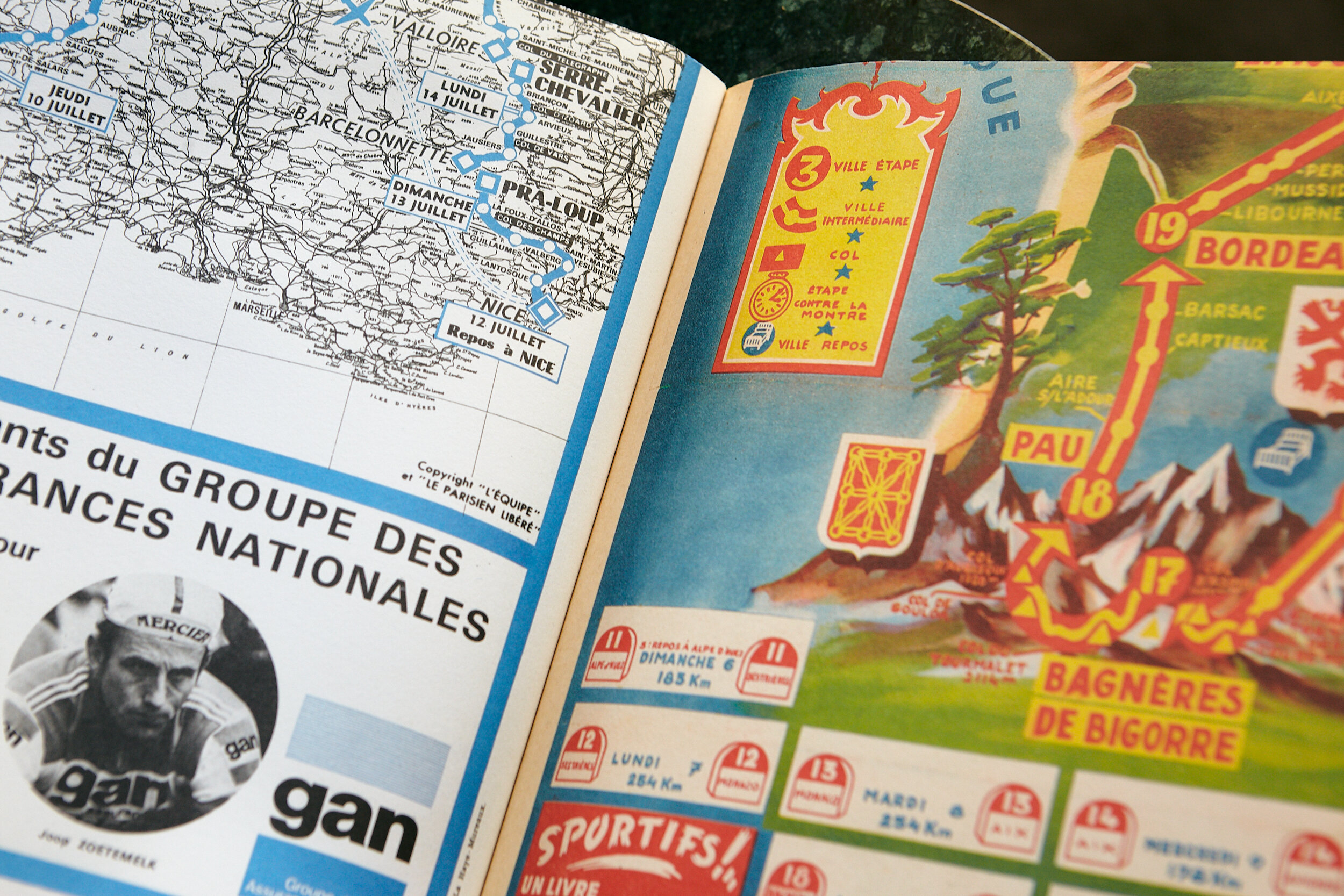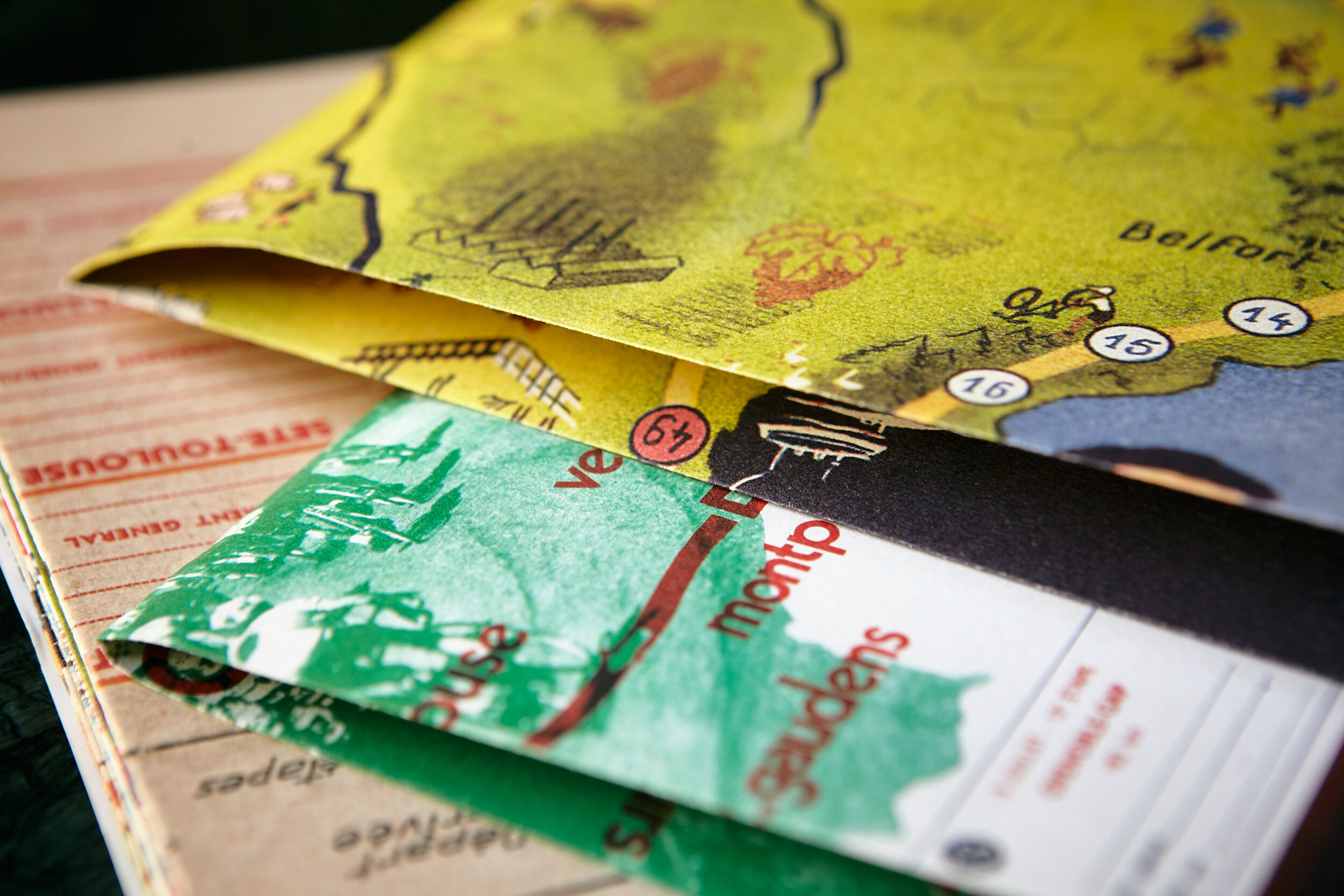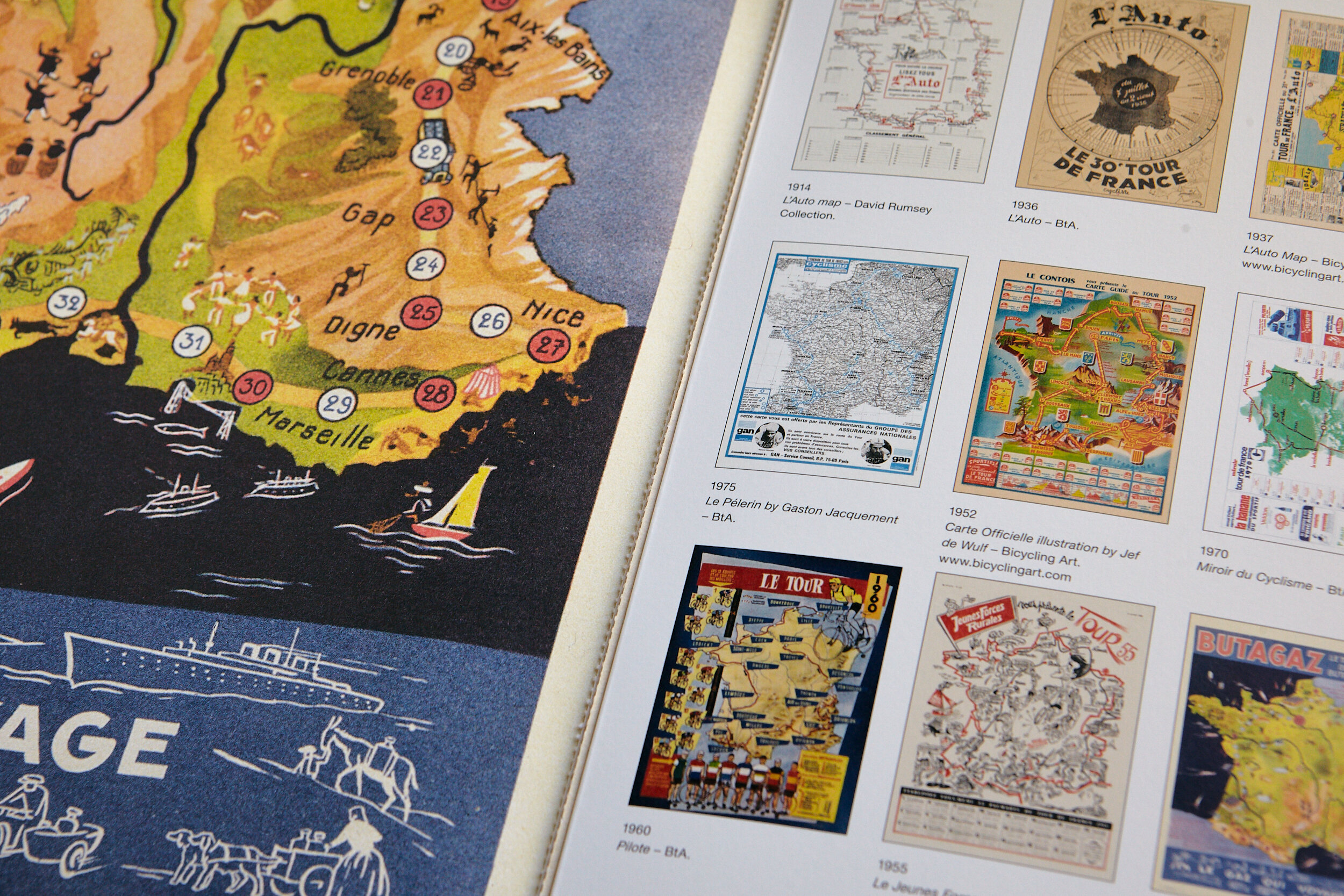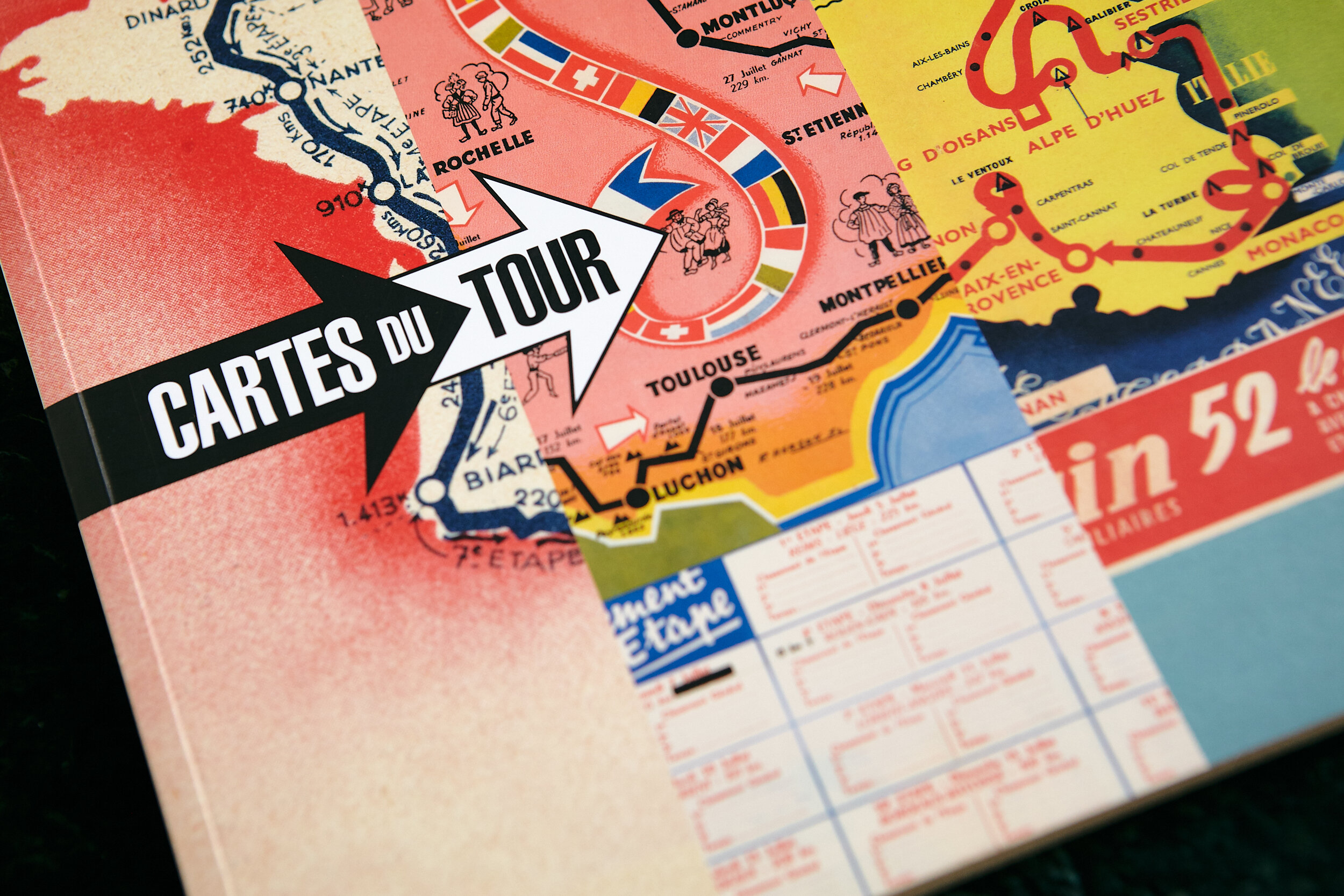Cartes du Tour Posters
Cartes du Tour Posters
The original idea started out as a set of gift wrapping sheets for Christmas, but as the Cartes du Tour book was published we wanted to make some replicas, maybe for gift wrapping, maybe for hanging on the wall. But we definitely think that the cartographer’s art should be rekindled. The routes of the Grand Tours, especially the Tour de France, are fascinating and some of the folks that drew them really deserve to be celebrated. Therefore from the Cartes du Tour book archive, we took 12 of our favourite prints from: 1914, 1934, 1936, 1937, 1950, 1952, 1955, 1960 1967, 1970 1975 and 1980.
“Collecting the maps took many, many visits to archives and libraries, not just the BnF/Galicia Archives but also Pressesports and Getty, then French flea markets, websites, magazine shops and collectors.”
– Guy Andrews, Editor
We searched out a printer who could achieve the ‘slightly-larger-than-A2’ size poster pages, fold them and bind them into a perfect bound case with the added serrated tear-out edge. Strangely there are very few machines left that can achieve this type of print process and like cartography this type of print project is a dying art. Many of the early maps are printed on newsprint, so the show-through and paper quality varied enormously, some were very bad and had to be reconstructed completely, whilst others just needed a once-over. Printed on Munken Print White 80 gsm paper, to be close to newsprint in texture but with excellent colour-rendering properties. The result is beautifully presented, poster-quality, 790 x 500mm sized prints. In some cases they look even better than the originals (as we fully re-worked the scans and improved the resolution) they really need to be seen to be believed.
“All of the maps we found needed some ‘work’ to get them into shape for printing. We work with some very talented folks at Bluetrain who can work wonders with very poor quality scans and prints. We used a variety of scanning and photography, then proofing and reproofing, to get the results we wanted and we even kept the folds and rips when they worked. Our full archive took around eighteen months of work to get to a printable state, from collecting them all to printing them.”
– Guy Andrews, Editor
